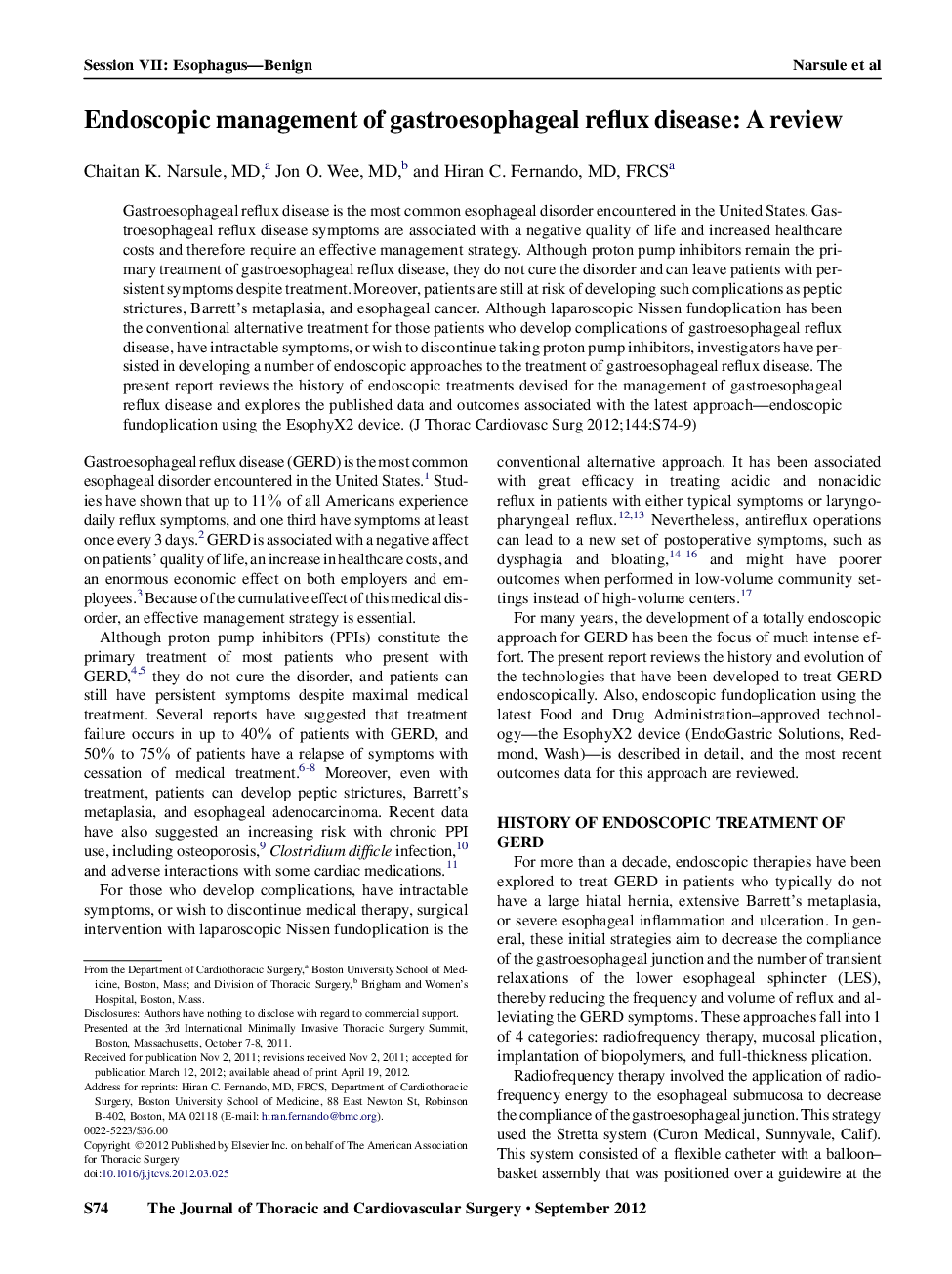| Article ID | Journal | Published Year | Pages | File Type |
|---|---|---|---|---|
| 5991704 | The Journal of Thoracic and Cardiovascular Surgery | 2012 | 6 Pages |
Gastroesophageal reflux disease is the most common esophageal disorder encountered in the United States. Gastroesophageal reflux disease symptoms are associated with a negative quality of life and increased healthcare costs and therefore require an effective management strategy. Although proton pump inhibitors remain the primary treatment of gastroesophageal reflux disease, they do not cure the disorder and can leave patients with persistent symptoms despite treatment. Moreover, patients are still at risk of developing such complications as peptic strictures, Barrett's metaplasia, and esophageal cancer. Although laparoscopic Nissen fundoplication has been the conventional alternative treatment for those patients who develop complications of gastroesophageal reflux disease, have intractable symptoms, or wish to discontinue taking proton pump inhibitors, investigators have persisted in developing a number of endoscopic approaches to the treatment of gastroesophageal reflux disease. The present report reviews the history of endoscopic treatments devised for the management of gastroesophageal reflux disease and explores the published data and outcomes associated with the latest approach-endoscopic fundoplication using the EsophyX2 device.
